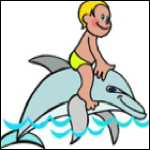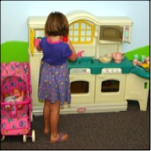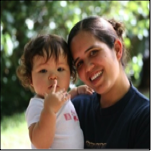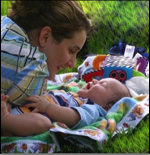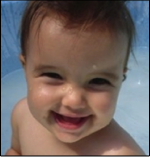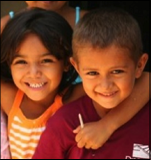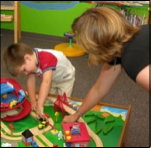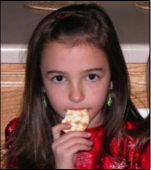AllAboutChildCare.info
by Kathy Lee
At this point in your pregnancy, you should already have your child care concerns finalized. Now is when you want to concentrate all your thoughts and energies preparing for the arrival of your precious new addition...
If you’re going to leave your child with someone for an extended period of time, it’s a good idea to find out what type of atmosphere will surround your baby...
Child care costs are as varied as the care models themselves, all with a diverse demographic that adds to the complexity of coming up with average costs you can use as a guide...
It’s not enough to have your child enrolled in pretty surroundings if those surroundings don’t have any positive impact on their all-around well being...
Although I can provide you with a lot of information and guidance right here on this site, there's some additional advantages to be gained by connecting to those sites listed on my Resource Center...
I've written about the importance of learning all about your caregiver's philosophy and qualifications, but let's get more specific about three areas of concern: the continuity of care, the routines they develop...
Get all the help and information you need when you need it, no matter where you live. Links to all the places on the internet that can disseminate up-to-date support mechanisms are at your fingertips.
You can apply everything I've said about caregiver philosophy and qualifications in general as it applies to infants and toddlers, but at some point in time...
Even though I am no longer in the classroom every day as a teacher, in my recent capacity as Associate Director, I still would have daily interactions with....
"Mommy, I don't feel so good".Oh, those words we dread hearing. Practice them in your mind and make preparations while they're just an annoying thought so when the time does come...
Is it possible that one can be passionate about a curriculum? Absolutely; especially if that person has already devoted thirty five wonderful years working in the career field of Early...
The late David Weikart, High Scope's founder, originally established it as a camp program for talented adolescents. The name "High" was chosen to signify the aspiration level, and...
Dear Reader: Assisting parents, grandparents, aunts, uncles, and just about anyone looking for Child Care for their infants, toddlers, and preschoolers is my main motivation for creating this site...
I have been in the Early Care and Education field for over 35 years, ten of them as a classroom teacher, eight years as a Center Director, and for five years as the Infant Toddler Specialist at the Child Care Council of...
Click on the picture next to
the article you want to read
Click on the headlines to read the article
★ CHILD CARE Tips
COMING YOUR WAY
in the months ahead.
Look for my articles on the importance of your child being engaged in
Music, Movement, Early Literacy,
Art, and Sign Language,
as well as my continuing series
additions of CHILD CARE Tips
Child Care Information about Infants, Toddlers, and Preschoolers at AllAboutChildCare.info
Keep in mind that I may receive commissions when you click links in this blog and make purchases. This does not however impact any reviews or comparisons I may make.
I try my best to keep things fair and balanced in order to help you make the best choice for you.
© 2019 AllAboutChildCare.com owned & operated by Creative Lees, Inc. All rights reserved. maintained by Siteenstein.com
Child Care Information about Infants, Toddlers, and Preschoolers at AllAboutChildCare.info
CONTACT INFORMATION: EMAIL: AllAboutChildCare.info@gmail.com PHONE: 516-660-0350 MAILING ADDRESS: Kathy Lee, 24001 Calle de la Magdelena #2055, Laguna Hills, CA 92654

Sinking Your Teeth Into The Biting Issue.
Child Care Information About Infants, Toddlers, and Preschoolers
9 PAGE CHECKLIST GUIDE
No Credit Card Required!
No Strings Attached!
FREE
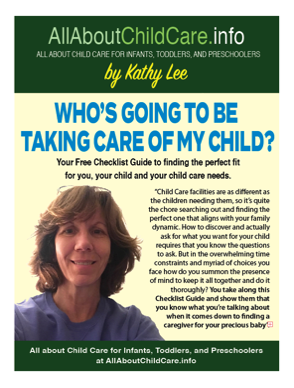
The late David Weikart, High Scope’s founder, originally established it as a camp program for talented adolescents. The name “High” was chosen to signify the aspiration level, and “Scope” described the breadth of the vision they hoped to achieve.
In 1962, while he was a special education director, he began a preschool program in an effort to overcome a small district’s ineffective system of coping with rampant student failure by holding children back. Because many of the student body came to the program from poor and minority areas where their education began after the first grade, Weikart and his colleagues thought that it would be better for the children to begin in kindergarten as many of their classmates had, even starting school a year or two earlier than that.
At that time, this experimental program was among the very few early childhood programs in the nation, and it rapidly gained popularity. The basic underlying philosophy of the High Scope method, based on the work of developmental psychologist, Jean Piaget, was expressed by him in this way: “When the active school requires that a student’s efforts come from the student himself instead of being imposed, and that his intelligence undertakes authentic work instead of accepting predigested knowledge from outside, it is simply asking that the laws of all intelligence be respected”.
That’s why I love this program. It refers to an all-around involved child rather than one passively accepting instruction by a teacher. Essentially, if your child is an active learner, she (or he) can best learn from activities she plans and executes by herself. The teacher’s function in this case, would be to make certain that your child engages in the activities. The children are encouraged to organize their “work”, carrying over their activities to the next day. In this way, the child will think about these activities, discover spin-offs they had not thought of originally, deal with problems they had not anticipated, all while using this knowledge to try different solutions or build on new, emerging interests.
The teachers learn to encourage children to use what they have learned in several ways, and one is as a future planning mechanism where the child can accept a teacher-written note or create one of their own to serve as a reminder to put something physical in their cubby that will remind them to take a particular action. A favorite device in the High Scope method is a “Work in Progress” sign that a child can affix to their project, alerting others that the unfinished work is not to be touched, and reminding themselves that they are in the middle of an unfinished project. At the very least, it promotes this child’s sharing their project descriptions, their future ideas, and details they share with teachers and family members as it relates to their “work”.
For many years now, the High Scope method has been the accepted and active practice for early childhood education in ages 2 thru 6 and has currently shown to be useful for those children with special needs as well. It assumes that children needn’t be motivated by adults, but that adults should rather encourage learning that extends the child’s present functioning level. The focus essentially, is not on what the child is incapable of doing, but rather what their current strengths and interests might be. In essence, the teacher should match learning activities to a child’s skill at every functioning level.
Finally, this learning method stresses more free play and less formal or structured teaching or therapy. The basic goal of an early childhood educator should be to “provide the ladder, but allow children tto occupy different rungs”, as one source put it. Let children find their own way, but let them know in advance when transitions must be made, have fewer and longer activities for 2 to 4-year olds in particular, thereby reducing the number of changes they will experience, and develop art and music activities that are more likely to engage most children. These are some of the enlightenments we have experienced while we essentially realize that children’s choices should not be limited any more than is absolutely necessary. And that parents, is why I find the world of early childhood education so fulfilling and rewarding.

★ CHILD CARE Tips
Hot Topic: Using Sun Screen Consistently.
This summer, we have been experiencing hotter than normal temperatures making it more important than ever to keep the sun from playing havoc with children’s skin. It’s important that you make certain all your children (and you) go outside well protected.
For kids 6 months and older, be sure that the sunscreen you apply has an SPF of 30 or higher to ward off dangerous sunburns and the problems that result from tanning.
Choose one that protects against both UVA and UVB rays, referred to as a ‘broad-spectrum’ sunscreen. As a general rule though, sunscreens will provide better protections against UVB rays than UVA rays, so even though you take the time to apply sunscreen, understand that the risk of skin-aging signs still exist.
To avoid exposure to possible skin allergies, try to avoid those with PABA in their ingredients list. If your child has sensitive skin, look for titanium dioxide in the product’s active ingredient list; it’s a chemical-free block.
For sunscreen to work effectively, it must be applied following some strict guidelines, as follows:
● Apply sunscreen about 15 to 30 minutes before kids will be going out in the sun, so that a good layer can accumulate. Don’t fail to include lips, hands, ears, shoulders, feet, and the back of their necks. In fact, lift up bathing suit straps and concentrate on other other hidden areas that might shift and become exposed with their movement, applying sunscreen liberally in those spots.
● Don’t try to extend the use of a bottle of sunscreen by spreading it too thin; it’s not worth the trade-off.
● Reapply sunscreen about every 2 hours, as recommended by the Academy of Dermatology and make sure you reapply it after your child has been sweating or swimming.
● There are waterproof formulas that can be applied to children who will mainly be playing in water or swimming. Water beads reflect the sun’s rays, and because of the water’s cooling effect, might not immediately notice how burned they are getting, so kids need extra protection around this activity. Water-proof sunscreens may last an average of 80 minutes in the water, and some have a feature that gives them the added advantage of being rub-proof and sweat-proof as well. At any rate, be sure to play it safe by reapplying when kids emerge from the water.
● Finally, regardless of skin tone, The American Academy of Dermatology recommends that all kids wear sunscreen with an SPF of 30 or higher; it’s just good sense to do it!
The Origin Of High Scope:
Part 2 Of Emergent Curriculum.


